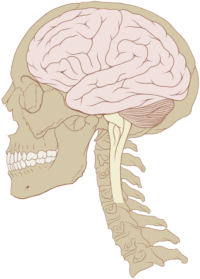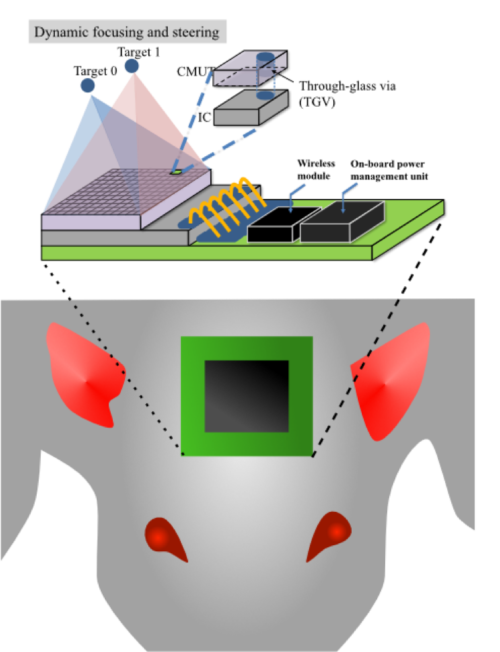An Ultrasound-Based and Wireless Neural Stimulator
The goal of this project is to develop a dynamically-controllable, non-invasive, ultrasound neurostimulation system. Neurostimulation is a procedure in which nervous system activity is purposefully and systematically induced or inhibited, usually for therapeutic purposes. Neurostimulation has been demonstrated as an effective treatment tool for conditions such as Parkinson’s and epilepsy, and researchers believe that it can be used to mitigate the effects of many neurological disorders. However, current neurostimulation techniques are limited in their efficacy. Transcranial magnetic stimulation (TMS) uses a magnetic field to induce activity in a non-specific region of the brain. While this approach is non-invasive, it suffers from poor resolution and is not deeply penetrating. Conversely, deep brain stimulation (DBS) uses implanted electrodes to stimulate highly specific regions of neural tissue. While this approach solves some of the problems associated with TMS, DBS is invasive and, in scenarios in which different areas of the brain need to be stimulated over time, inflexible.


We are developing a front-end integrated circuit (IC) that will interface with a 16×16 2D CMUT array to realize an ultrasound field pattern (USFP) using quantized phases and amplitudes. The IC uses a pulse width modulation (PWM) technique with a three-level pulse to generate excitation signals having multi-level quantized amplitudes. To date, our work has focused on implementing beamforming and steering capability in the IC for a 16-element 1D CMUT array. Future work will expand the IC’s functionality to a 2D array. The figure to the left displays a model of the entire neurostimulation system and includes a diagram of how the system would be attached (externally) to a mouse’s head for testing.

This work is supported by the National Institutes of Health under Grant EY028456.